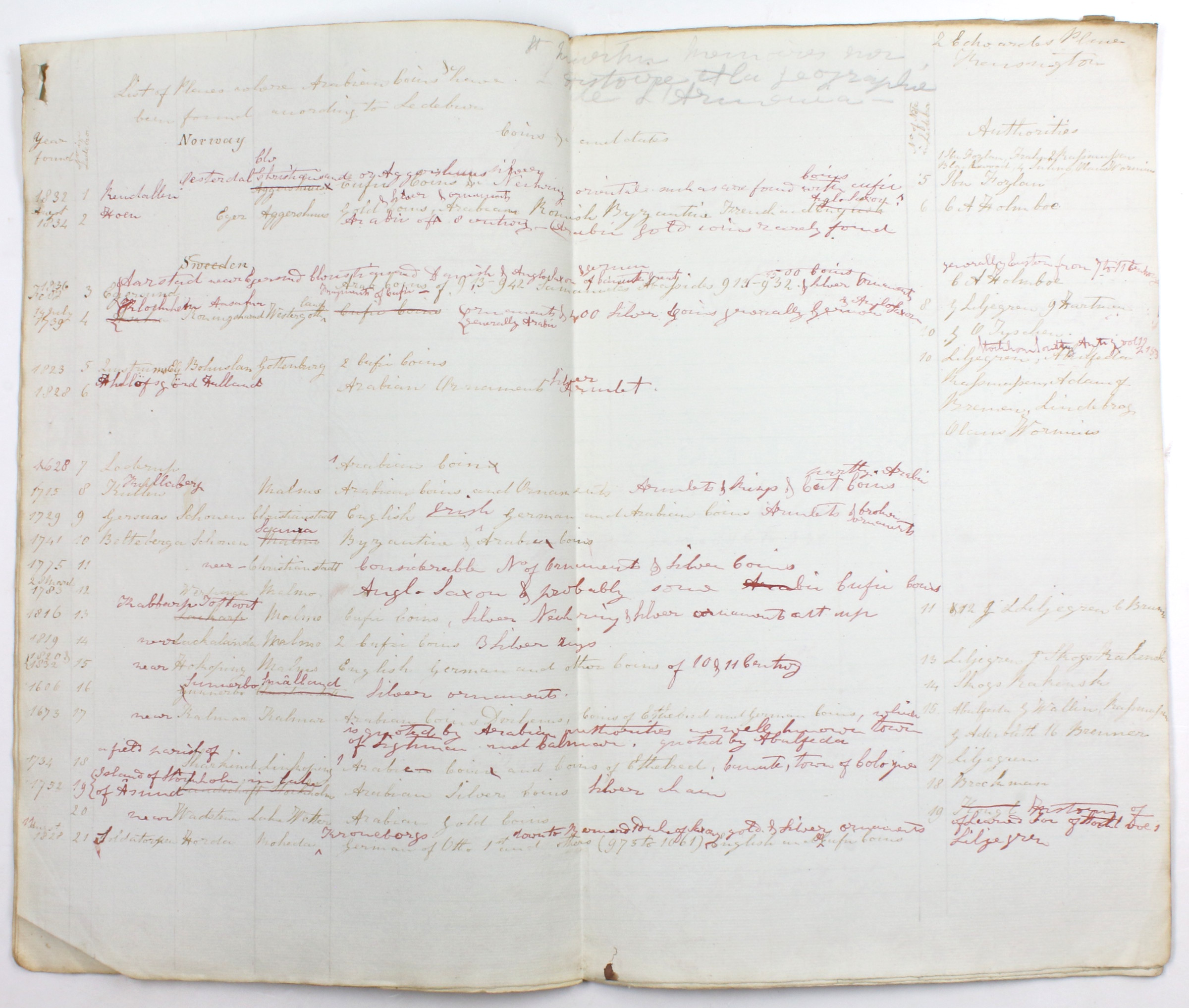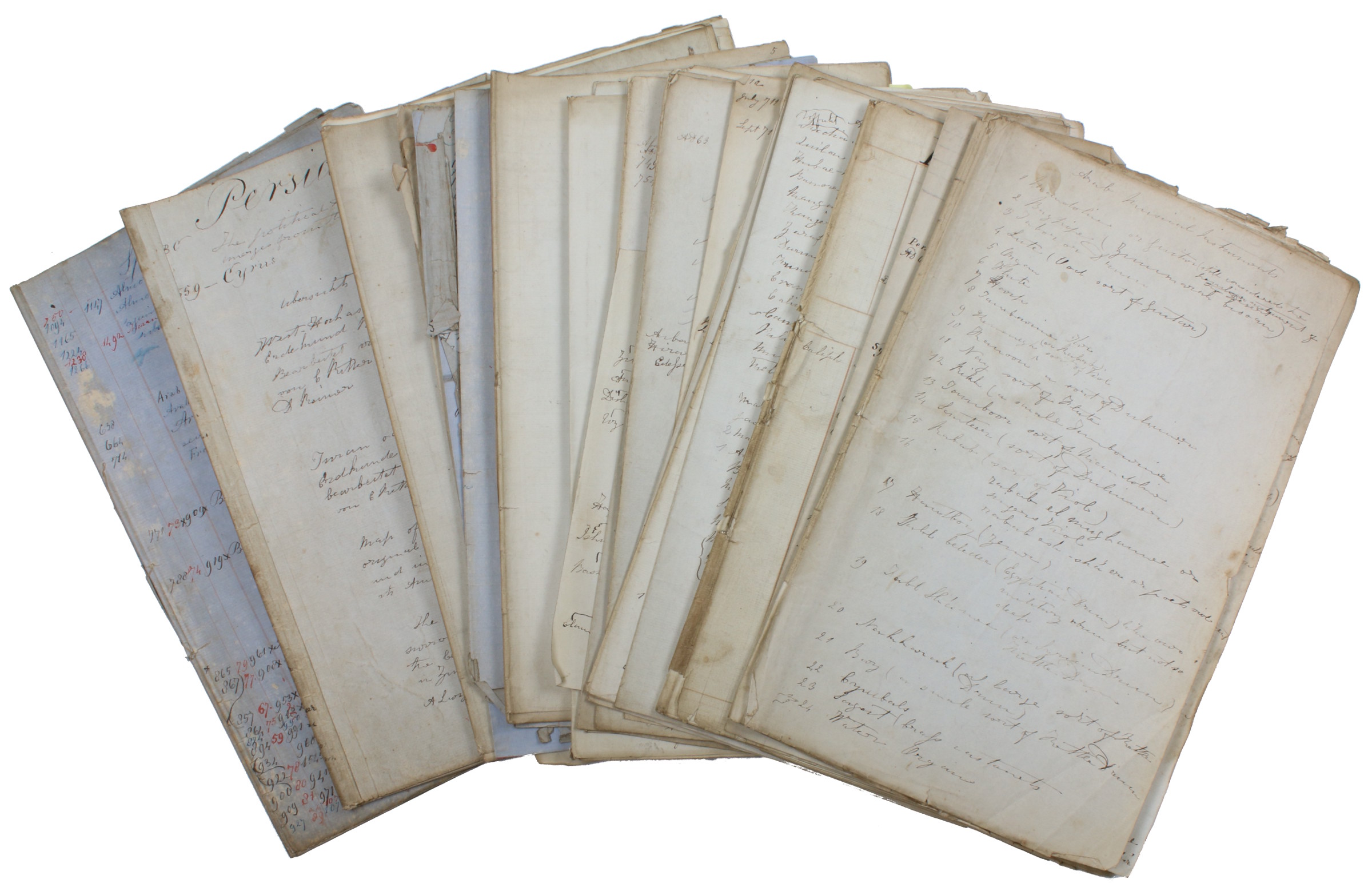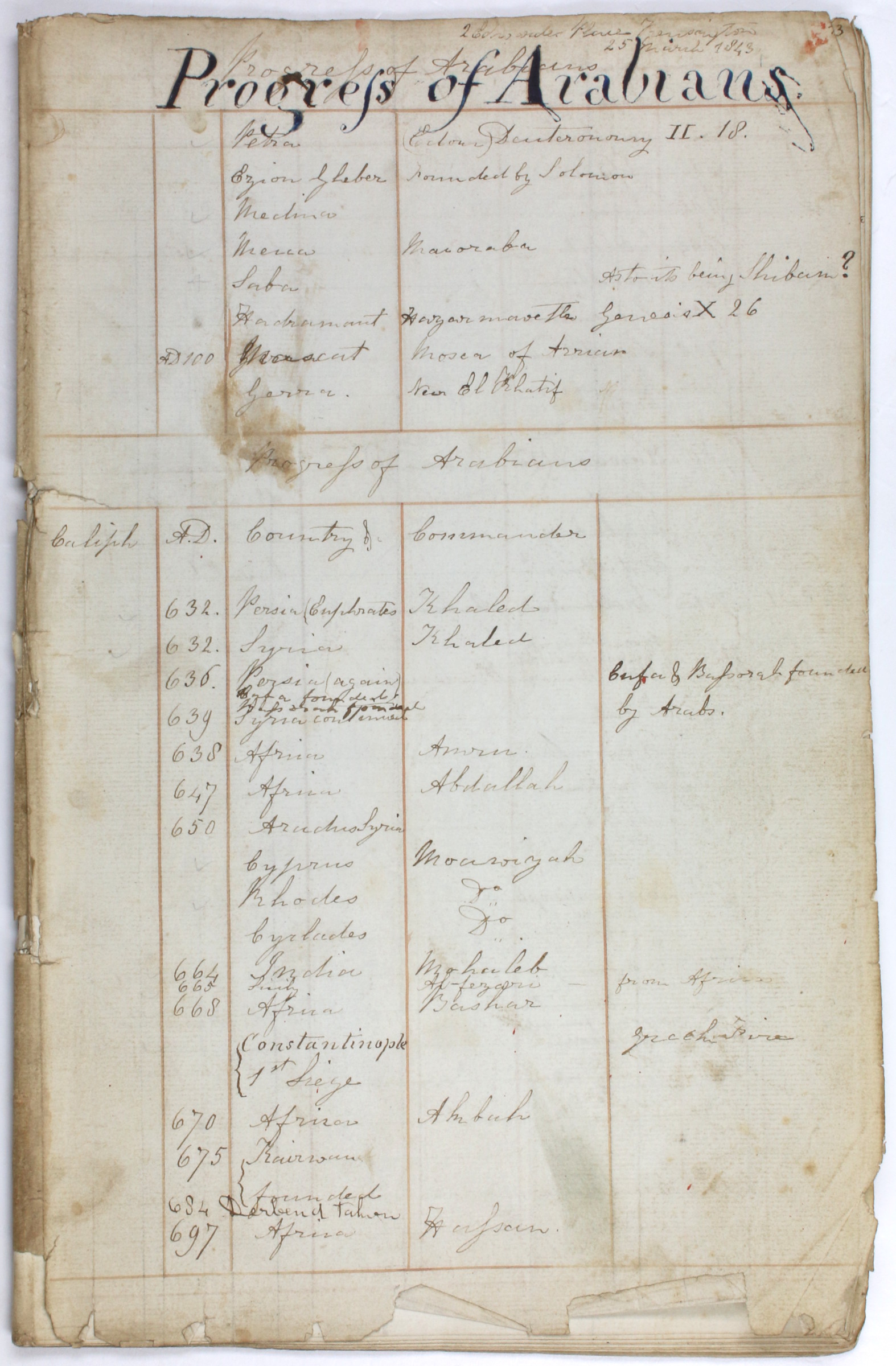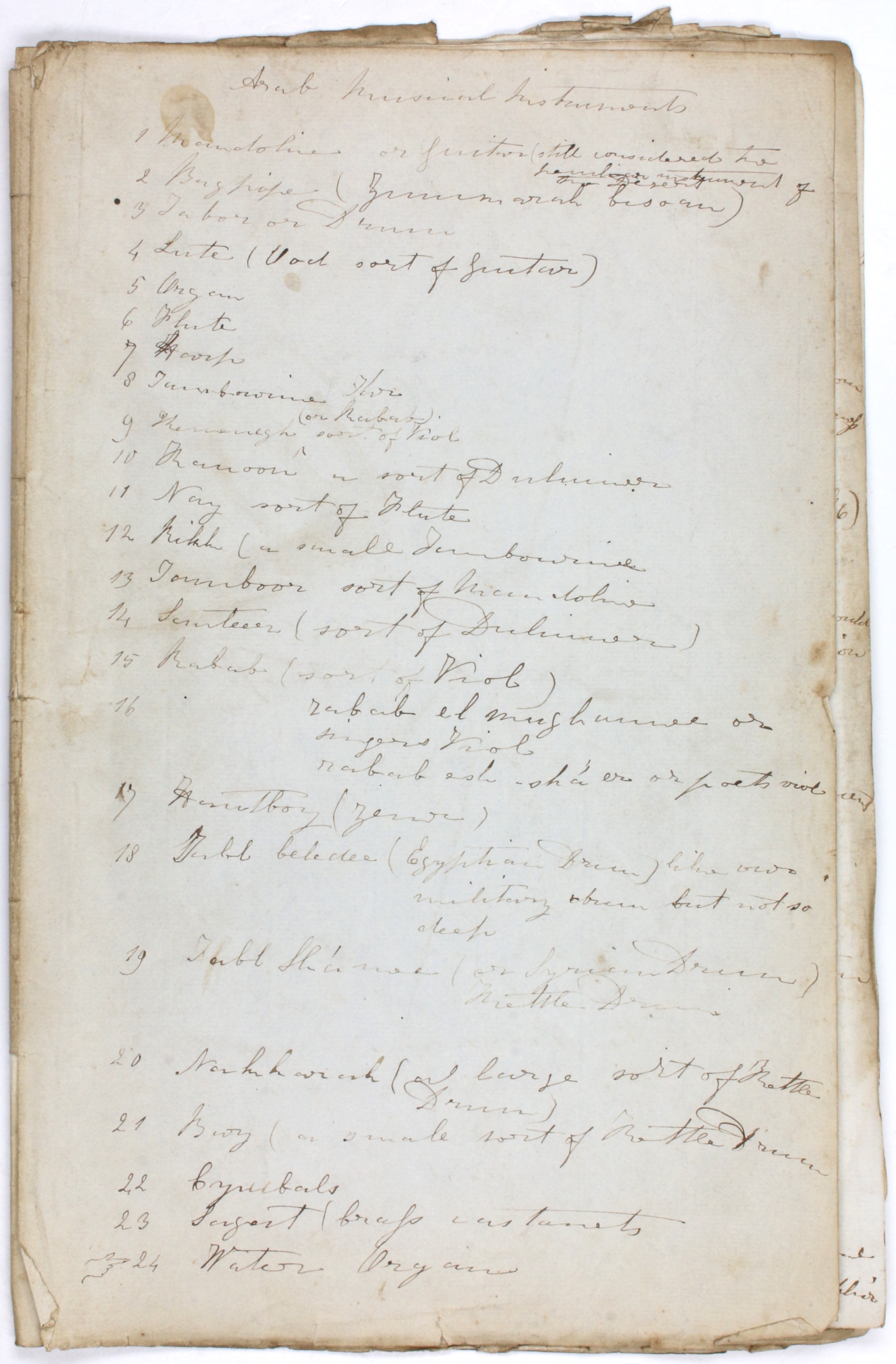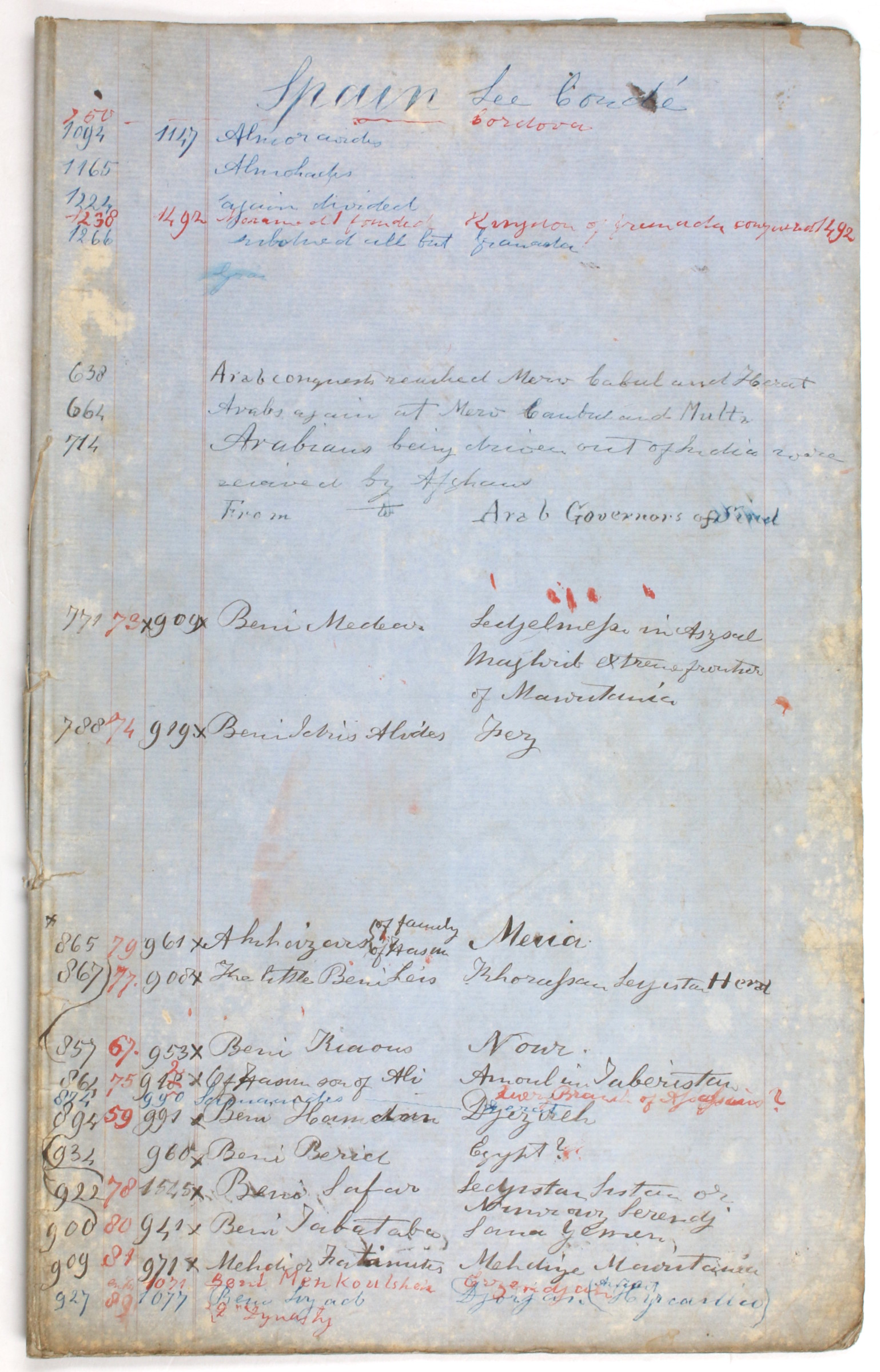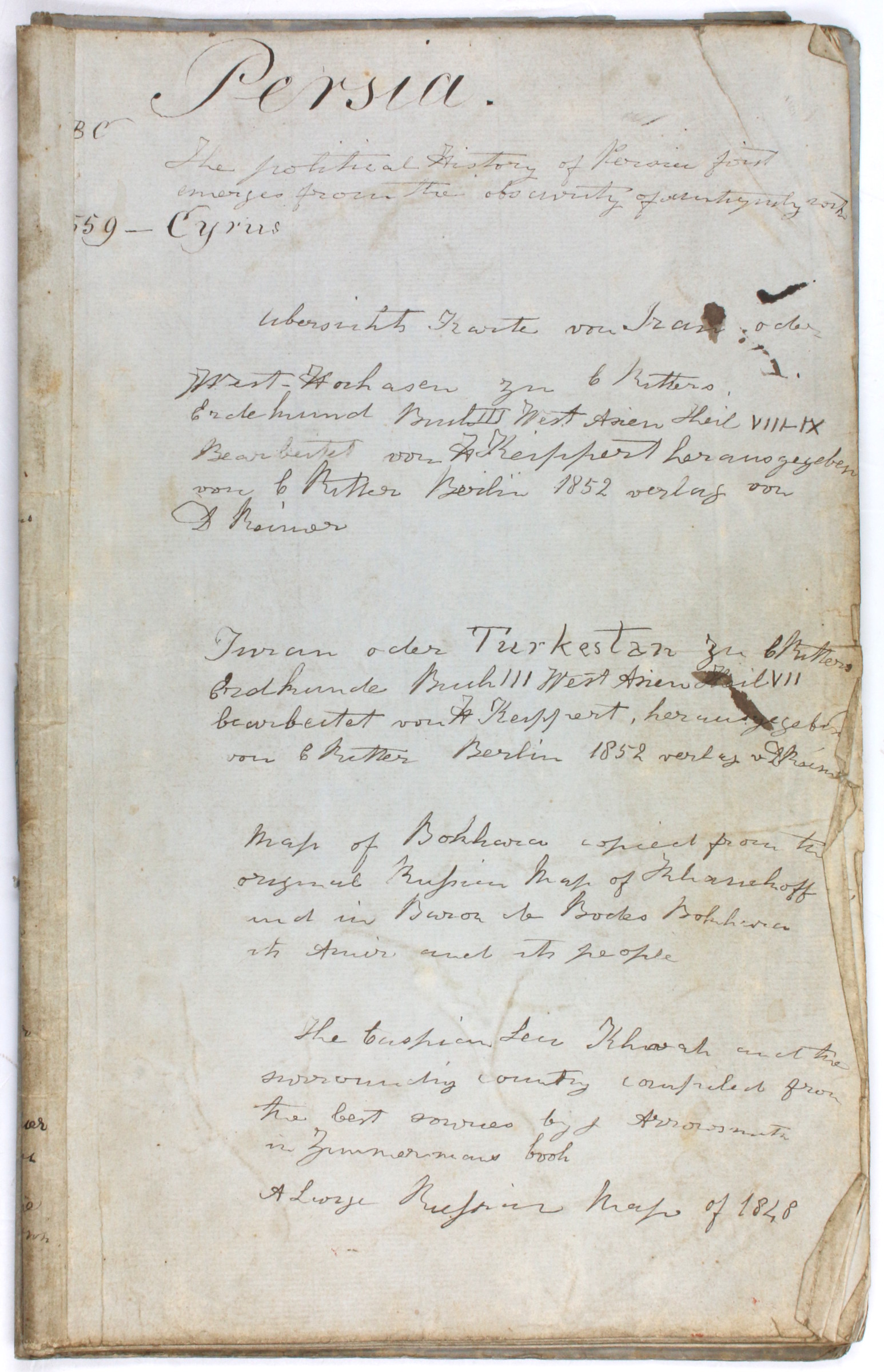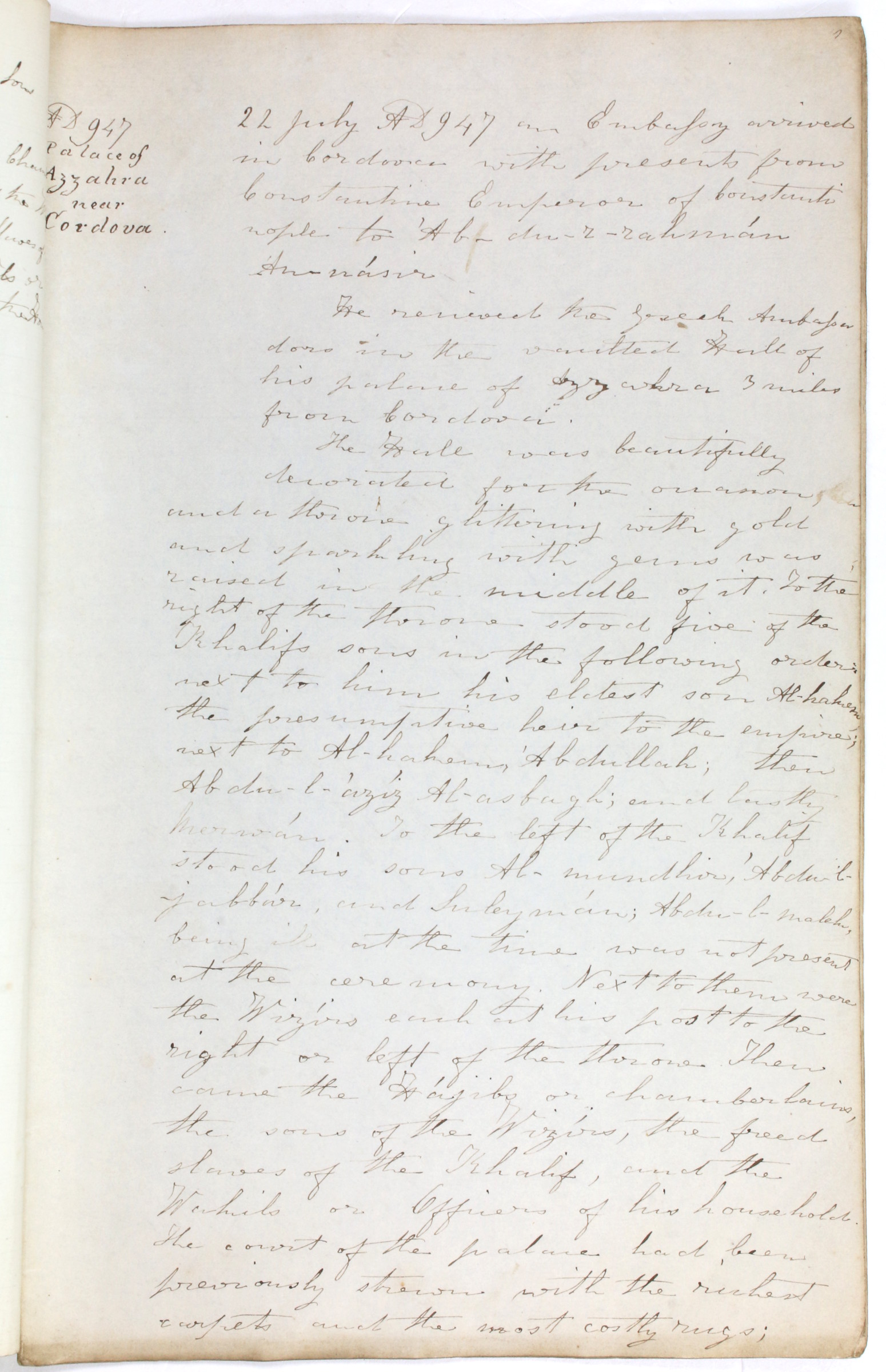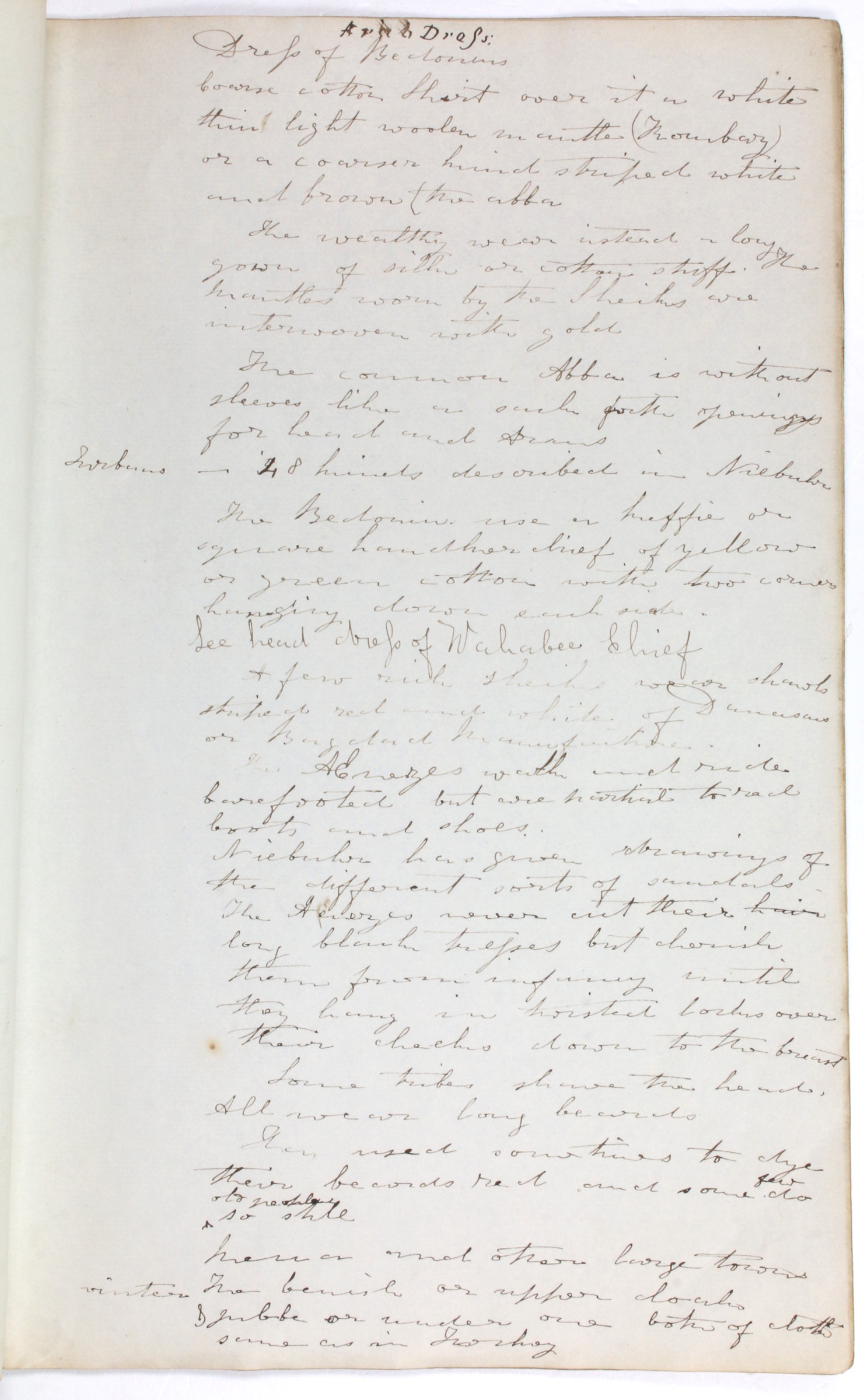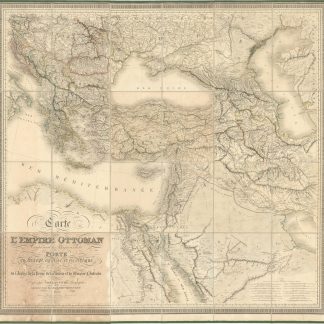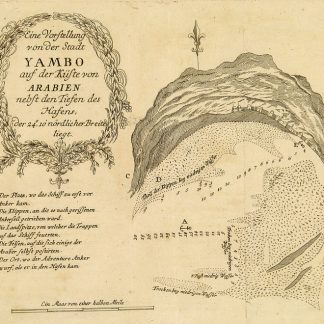A retired navy captain's notes on the history of Arabia and Persia
Arabian Manuscripts of the late Captain Shippard. [And:] Ancient Persia. MSS of the late Captain Shippard.
2 vols. Folio (210 x 330 mm). 142 ff; 48 ff. English manuscript on paper. Two booklets, loose or hand-stitched in parts, housed in loose brown paper wrappers labelled in a contemporary hand.
€ 1,500.00
A gentleman's project: this manuscript of a monumental history of Arabia and Persia was penned by a retired captain in the British Navy, William Shippard, an armchair anthropologist and close friend of the artist George Catlin, famous for his paintings and journals of travels among indigenous nations in what would become the American West. Evidently, his friend William Shippard had similar interests in another part of the world, where he wrote on similar themes about the distances and routes of travel from Aden to Shibam and from Oman to Mecca, the traditional clothing of the Bedouins and in particular the Wahhabi sheikh ("A few rich sheikhs wear shawls striped red and white of Caucuses or Baghdad manufacture", and some men "ride barefooted but are partial to red boots and shoes").
A veteran of naval warfare and six years in the Mediterranean, Shippard was particularly interested in the history of Arab conquests in Spain and France, excavations at Petra, and new knowledge of the geology of the Arabian Peninsula making its way into European academia. He provides many chronologies, but also short anecdotes, lists of "Arab musical instruments", a description of the arrival of Islam in the region of Petra, "the early inland trade of Arabia", and much more from across the Muslim world. He describes travel distances, some from Arab sources, some calculated, and a thorough record of the places in which Muslim silver coins from the early medieval period were found throughout Europe, especially in Scandinavia - long before there was a thorough understanding in the West of the immense importance of trade between the Norse (or Viking) diaspora and the wealthy Muslim world. Told through a 19th century Christian and European lens, Shippard's manuscripts provide an interesting glimpse into the Persia and Arabia of antiquity, and also of the theories and evolving historical understandings of his own time. Likely penned between his retirement from the Navy in 1846 and his death ten years later, Shippard does note the publication dates of reference material he draws from, which range from 1844 to 1857.
A working manuscript, with some light wear and occasional collections of papers pinned together; still in good order and well preserved.


